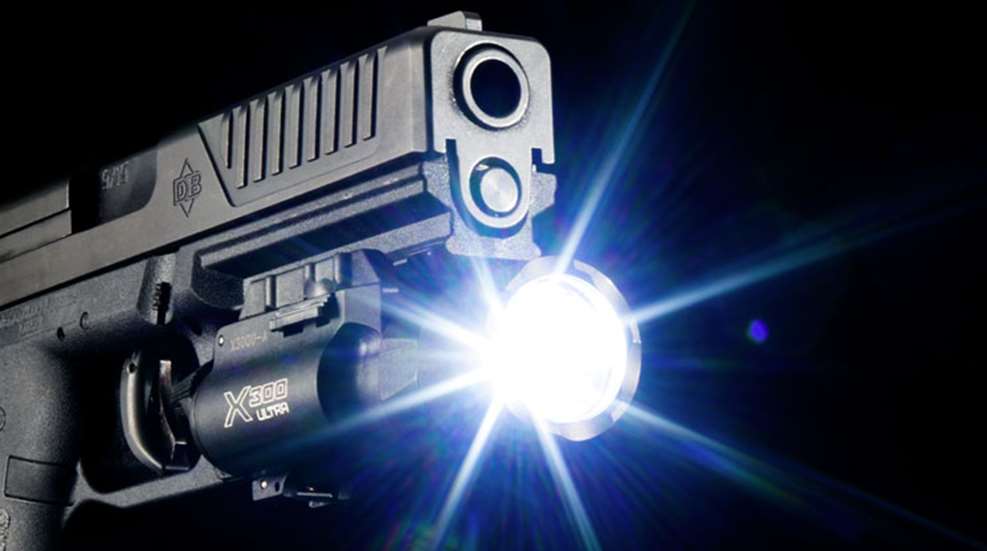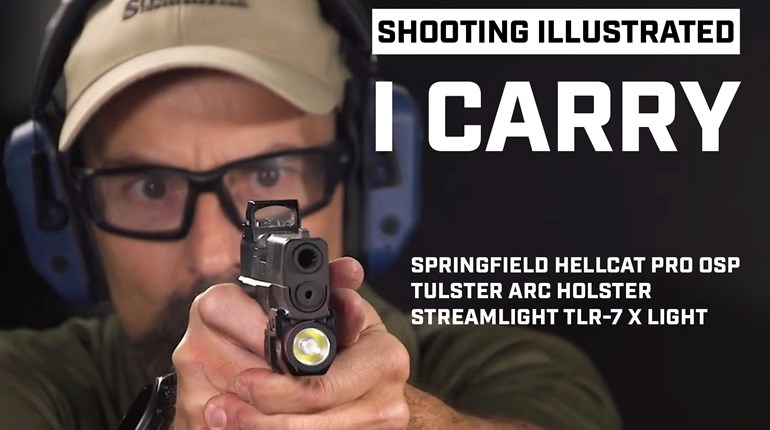
The Problem
You bought a new light for your home-defense pistol and recently completed a low-light training class that showed you how to use it with the handgun in various circumstances. You thought you were all set to defend the castle, until yesterday, when you read several articles discussing how police in Colorado and Texas have had a rash of negligent discharges when using handguns with weaponlights attached. These people receive more training than you, which makes you question whether you should have a light on your pistol. Should you go to a hand-held flashlight, or is there a way to avoid increasing the risk of a negligent discharge with a weaponlight mounted on your firearm?
The Solution
The subject you bring up is certainly a controversial one, with no clear-cut answer as to what is best for you.
In my training, I like to address problems and questions by asking: What is the objective you are trying to accomplish? Once we establish the parameters, then we can solve the immediate problem. Realize we live in an ever-changing environment and there is rarely one hard-and-fast answer to even the simplest problem. Let me give you some guidelines, and you can put together a plan to suit your needs.
The first piece of advice is to not use the light until you need to. Using it too soon can cause the element of surprise to disappear. The second consideration is the night accommodation of your eyes. It takes on average 30 minutes for your eyes to become totally adjusted to low-light conditions, but it takes mere seconds to ruin the ability to see in the dark when exposed to a bright light.
The primary reasons to use an artificial-light source in a defensive situation are to navigate, and to locate and identify the subject of interest. There are other applications—such as disorienting a threat and signaling family—that may be considered, but those are secondary.
In every gun-mounted light, the light and the muzzle are parallel to one another. If we consider firearm-safety Rule 2—never let the muzzle cover anything you are not willing to destroy—that alone should answer many of your questions. Specifically, since this firearm/light combination is for home defense, think about its use solely in and around your home.
Most of us are familiar enough with our homes to navigate from room to room and floor to floor without getting lost. Unless you rearrange the furniture every few days or don’t make the kids pick up after themselves, there isn’t a high likelihood of falling over something unexpectedly, especially if you are moving cautiously.
Consider ambient light availability as an aid to recognizing objects and shapes in front of you. I live in a rural area and unless the sky is overcast, I have enough celestial light to navigate without running into something. In densely populated areas, there is more than enough ambient light to allow you to see well enough to navigate in most cases.
When it comes to locating the object of your interest, are you sure you want to point your muzzle at something or someone you haven’t yet identified? Is it possible a family member who can’t sleep is the object of your attention, or perhaps a teenager coming home a little after curfew is trying to sneak in undetected so they won’t get into trouble?
Identification becomes another concern unto itself. Let’s say you just identified a family member with the light on your pistol. How does that make both of you feel? On the other hand, suppose you identify a person in your house whom you don’t know? Are they armed, what is their intent, do they respond to your verbal commands? So many questions with so many different answers. Depending on where you live and your own values (among other things), decisions become elusive in the split-second environment of unfamiliarity.
This carries over into where some of the police shootings have been questioned. In a heightened state of stimulation, with your heart pounding and your breathing intensified, fine motor skills tend to diminish. It is natural under stress for us to tense our muscles. Think about clenching your fist—does your trigger finger still operate independently of the rest of your hand when you feel endangered? Many of the cases making news recently involved grip-actuation switches for lights on pistols. When squeezing the grip to actuate the light, the trigger finger can move with the rest of the fingers in high-stress situations and initiate an unintended discharge, which stresses the importance of trigger-finger discipline.
To that end, the best solution is to train regularly with your weaponlight and use it to “bounce” light off of a safe backstop like the ground. Most gun-mounted lights will provide enough illumination to identify a target without being pointed directly at it, so you can achieve your objective without violating Rule 2.
That said, it can be difficult to train enough to proficiently operate a weaponlight. If you have doubts about using a gun-mounted light, or if you find yourself violating Rule 2 in training, consider a hand-held flashlight and train with that, too. Your degree of success and confidence will be enhanced accordingly.




































